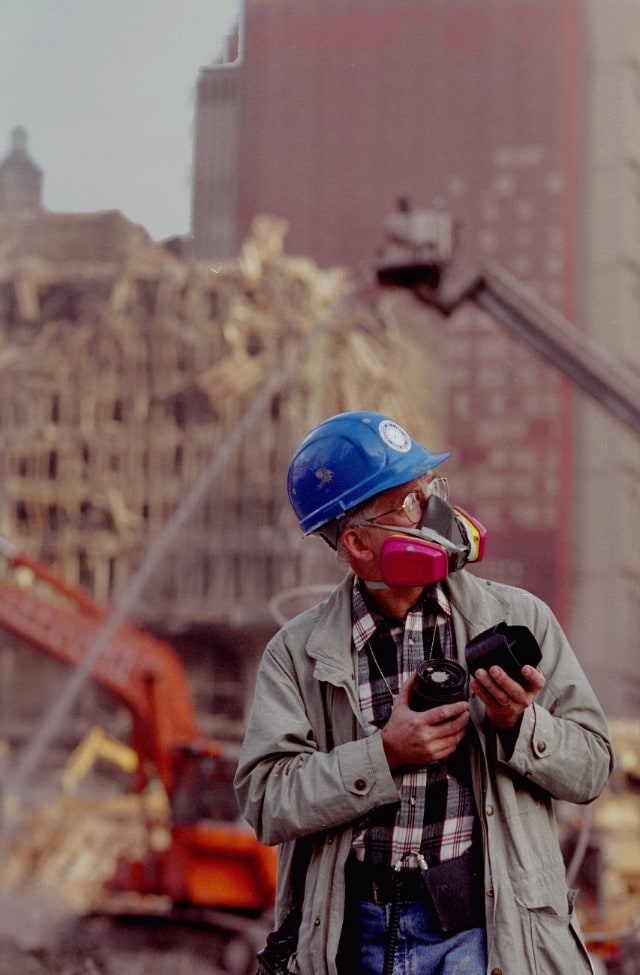- Exhibition Home
- Inside the Clinic
Inside the Clinic
The WTC Health Program has multiple Clinical Centers of Excellence (CCE) throughout the New York (NY) metropolitan area.
There are specific CCEs for Responder and Survivors. The Nationwide Provider Network (NPN) provides care for members outside of the NY metropolitan area.
Photographer Earl Dotter photographed first responders at Ground Zero in the aftermath of 9/11. Learn more about his story.
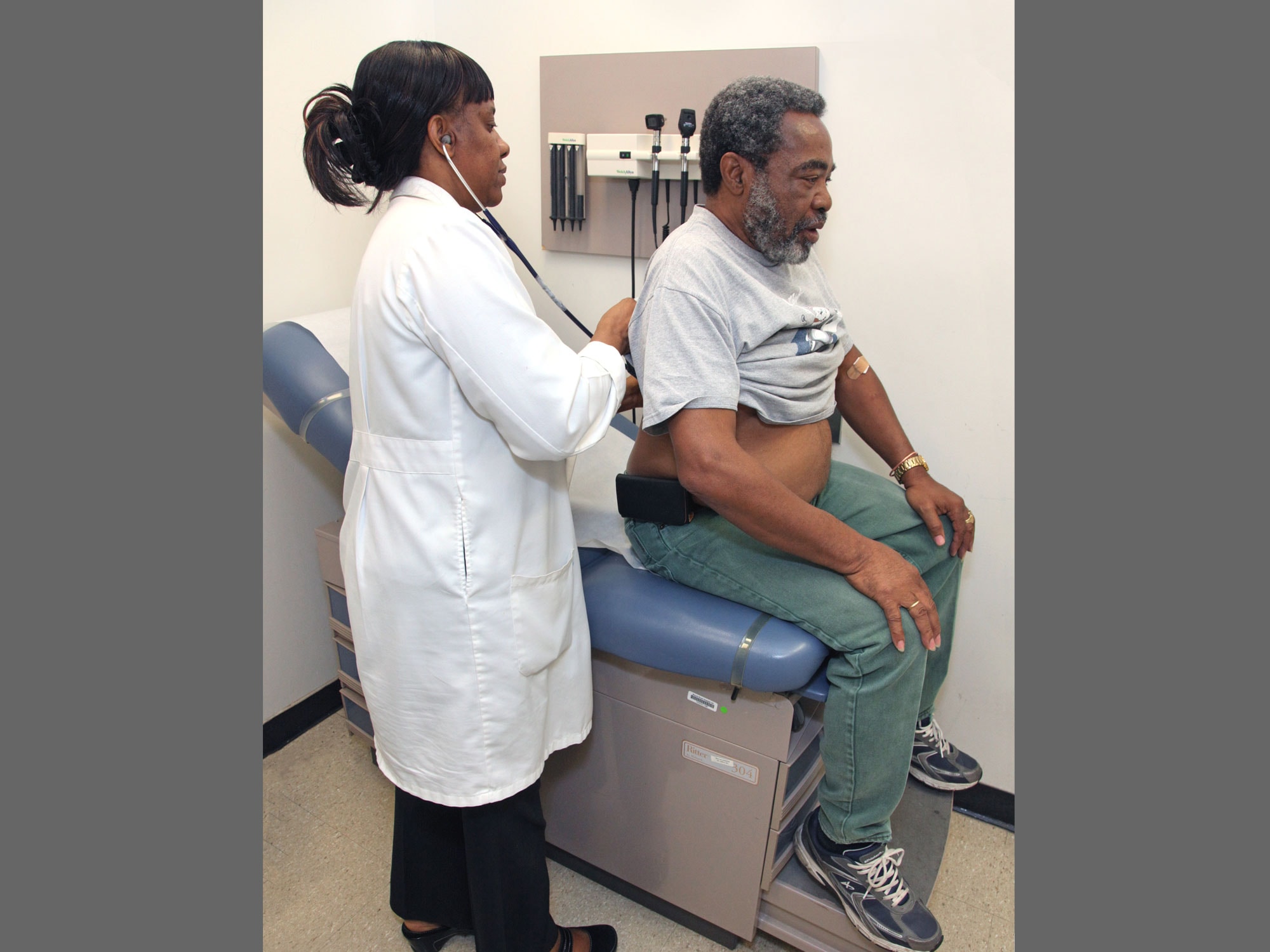
The World Trade Center (WTC) Health Program provides medical monitoring and treatment of WTC-related health conditions for 9/11 responders and survivors.
Photograph courtesy of Earl Dotter.
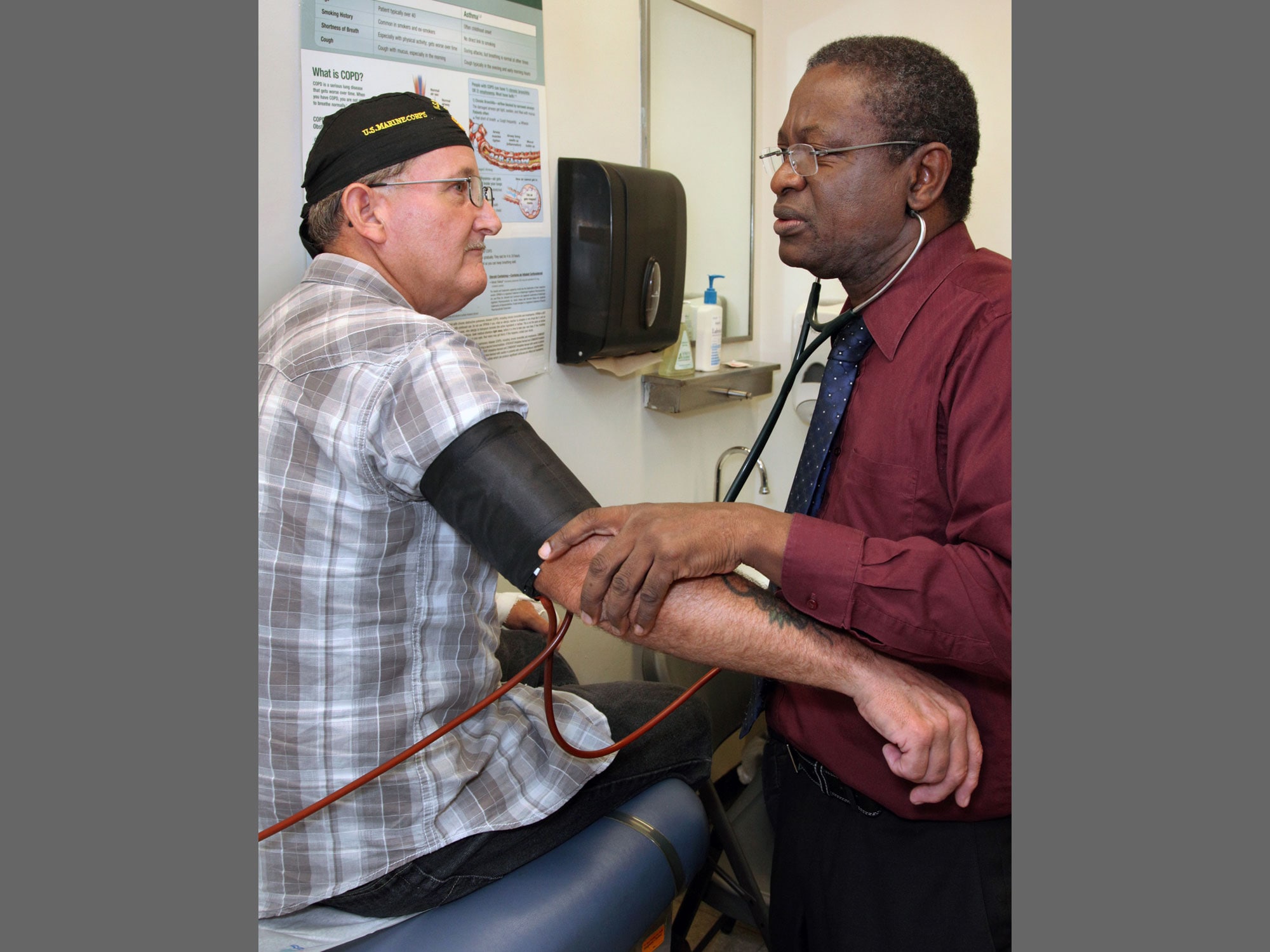
This Marine Veteran was buried in World Trade Center debris during the early stages of the rescue-recovery effort at Ground Zero. I photographed this responder at a subsequent Mt. Sinai health evaluation. He had recovered from his earlier injuries at the site, returning to duty driving truckloads of debris from Lower Manhattan to the site for its processing on Staten Island.
Photograph courtesy of Earl Dotter.
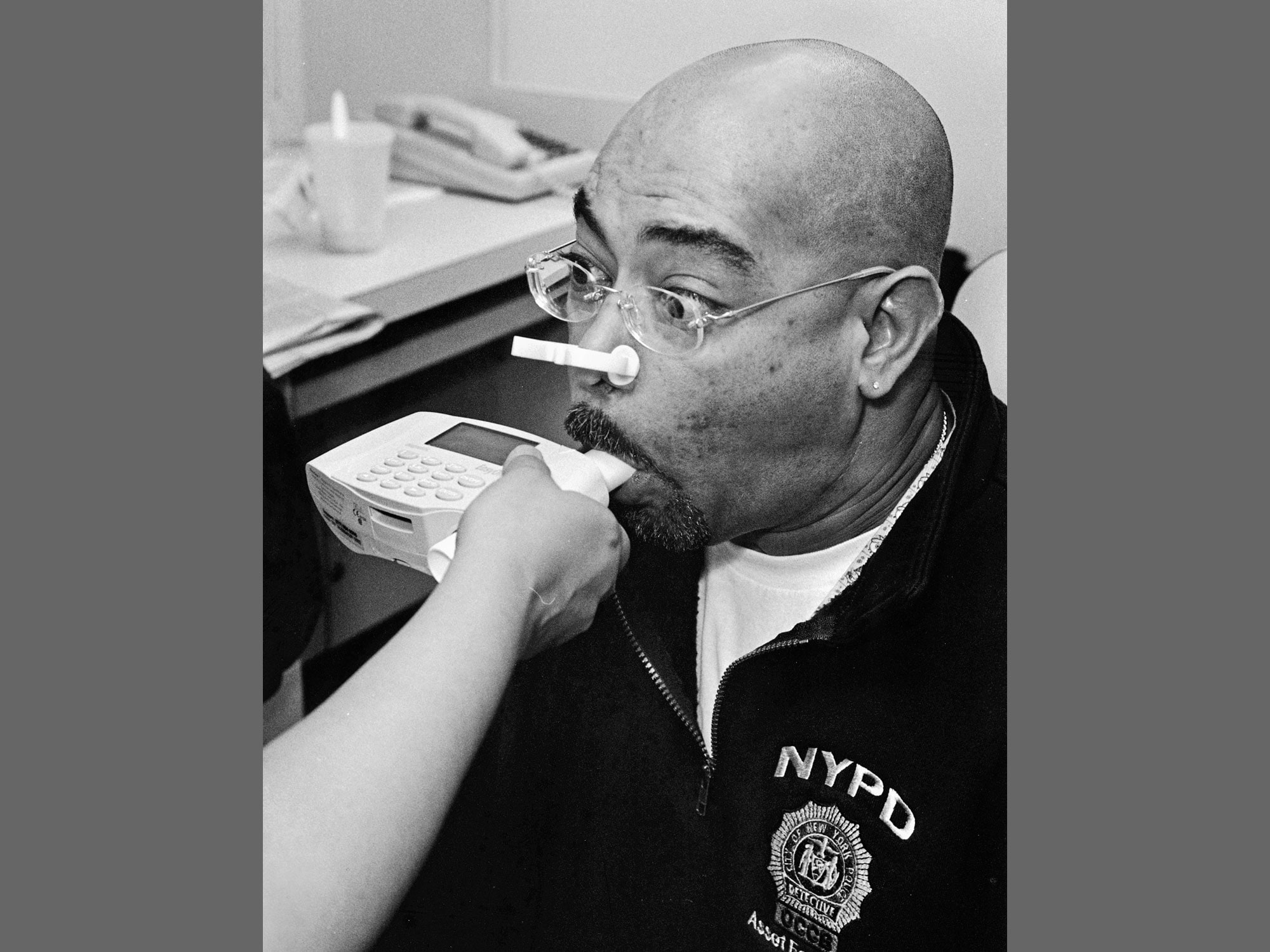
This NYPD Asset Forfeiture Detective undergoes a lung function test at the Mount Sinai Emergency Medical Monitoring Program. At this time there was no provision to act upon the medical findings found during this monitoring program process. Years of political pressure resulted in the enactment of the federal World Trade Center Health Program in 2011.
Photograph courtesy of Earl Dotter.
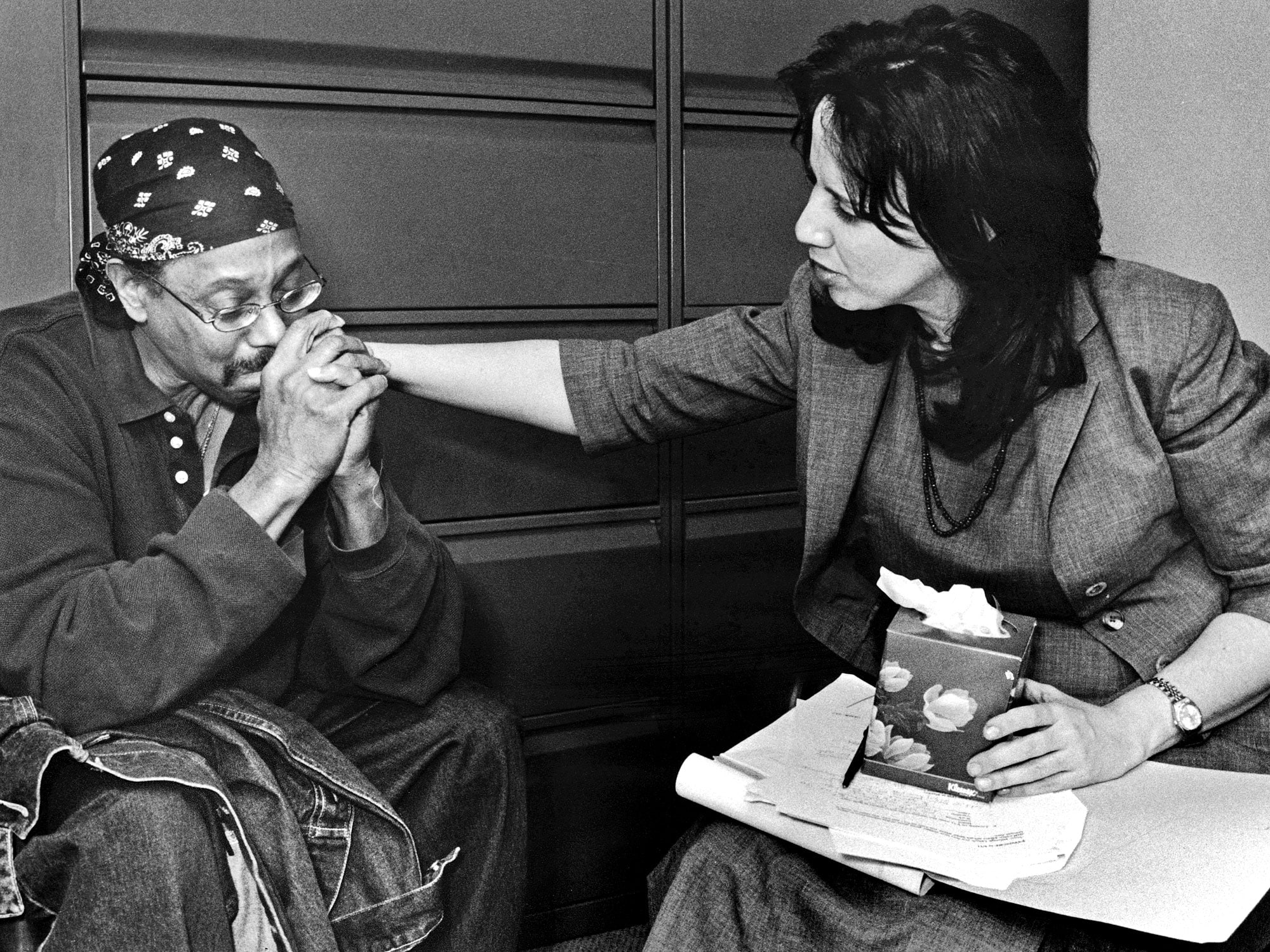
All needed medical attention for toxic dust exposures and related respiratory issues, cancers, and post-traumatic stress disorders. Others, like this City Sanitation Worker needed mental health screening that initially occurred during his intake interview. This sanitation worker had worked round the clock loading barges that ferried debris from Ground Zero to the Fresh Kills Landfill on Staten Island where it was processed by other city workers, looking for human remains.
Photograph courtesy of Earl Dotter.
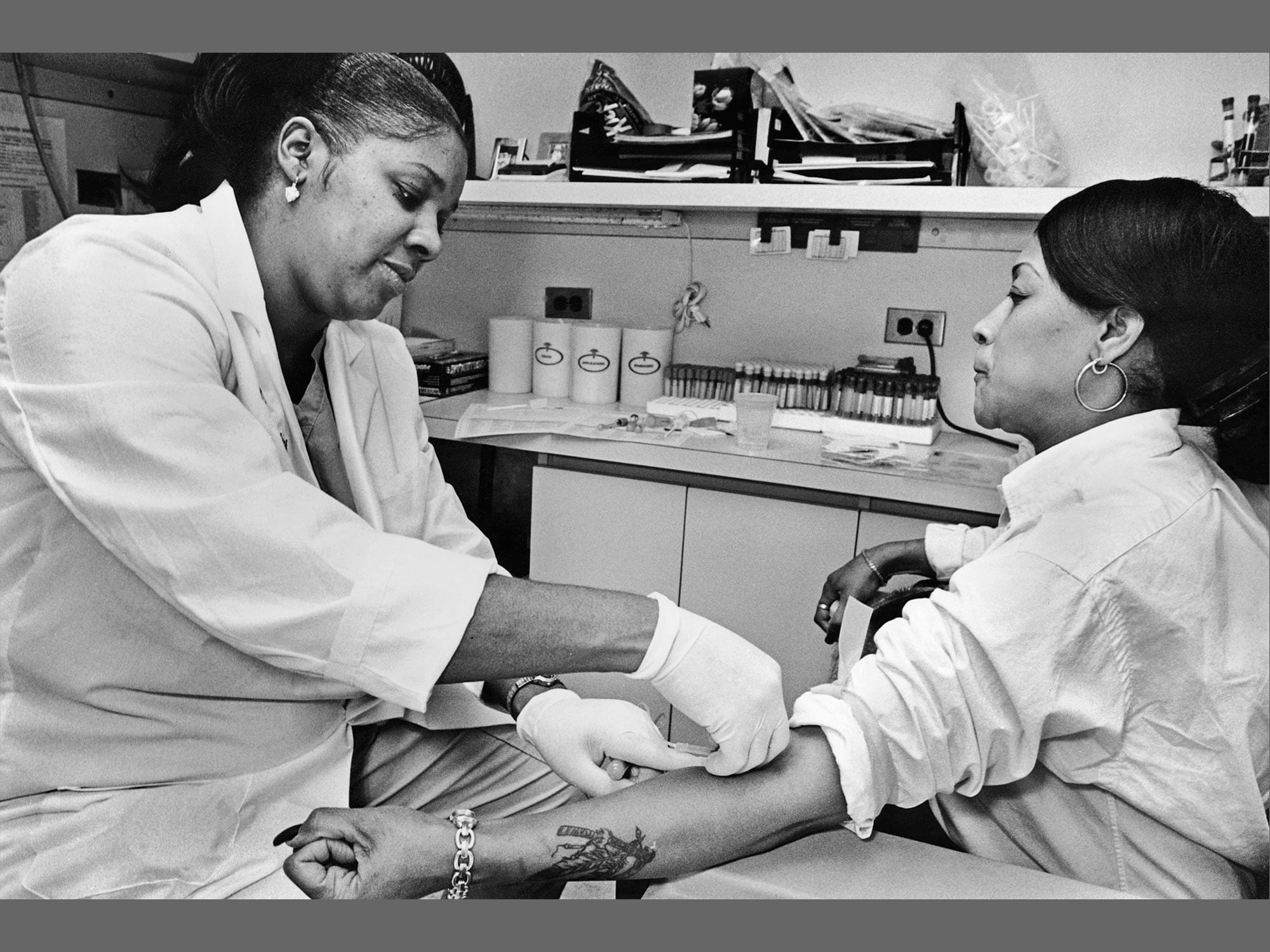
Emergency responders, including this New York City Police Department Detective, initially only had her health evaluated at the Mount Sinai Emergency Responder Medical Monitoring Program in 2002. She and other emergency responders were evaluated soon after their 9/11 exposures occurred. They had responded to the call to duty in the days, weeks and months following 9/11/2001.
Photograph courtesy of Earl Dotter.
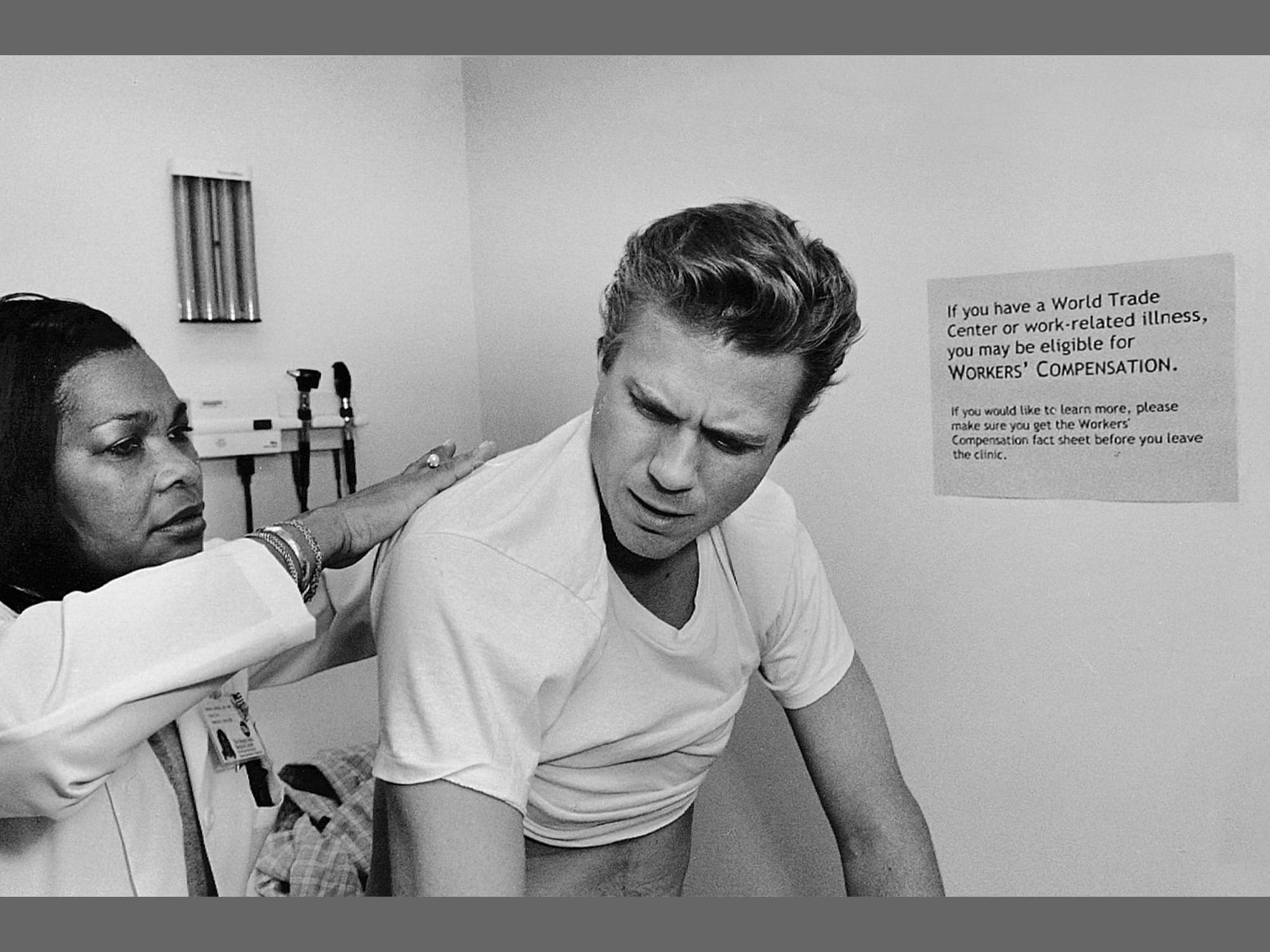
This man was a construction architect who participated as a 9/11 rescue/recovery emergency responder on Ground Zero. He was receiving his Emergency Responder health evaluation at the Mt. Sinai Medical Monitoring Program in 2002.
Photograph courtesy of Earl Dotter.
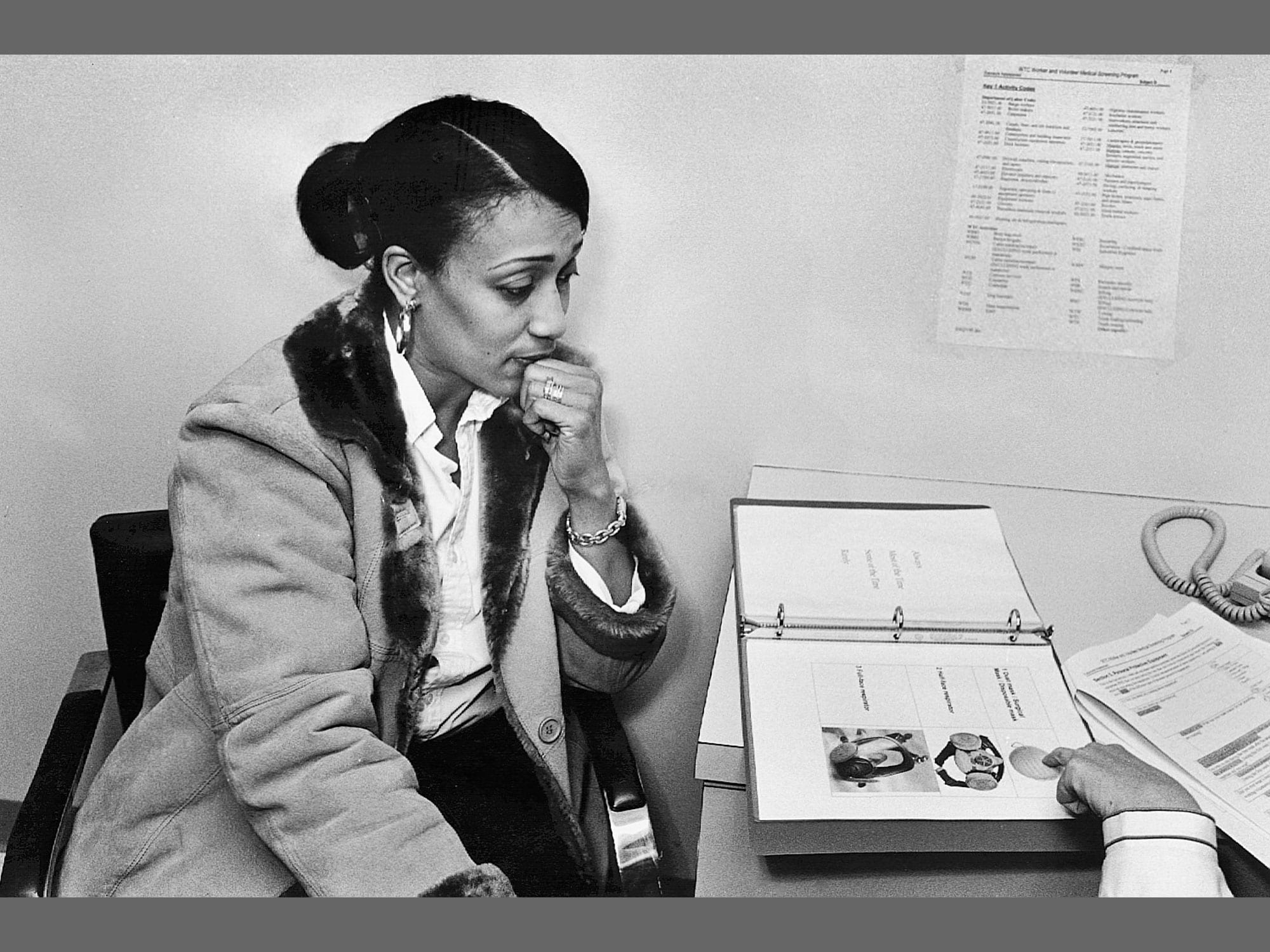
During her intake interview, this New York City Police Detective replied to a series of written questions presented in a notebook. In the photo the detective reviewed visuals of respirators and was asked to identify the type she wore while working at Ground Zero and nearby at the impact zone in Lower Manhattan.
Photograph courtesy of Earl Dotter.
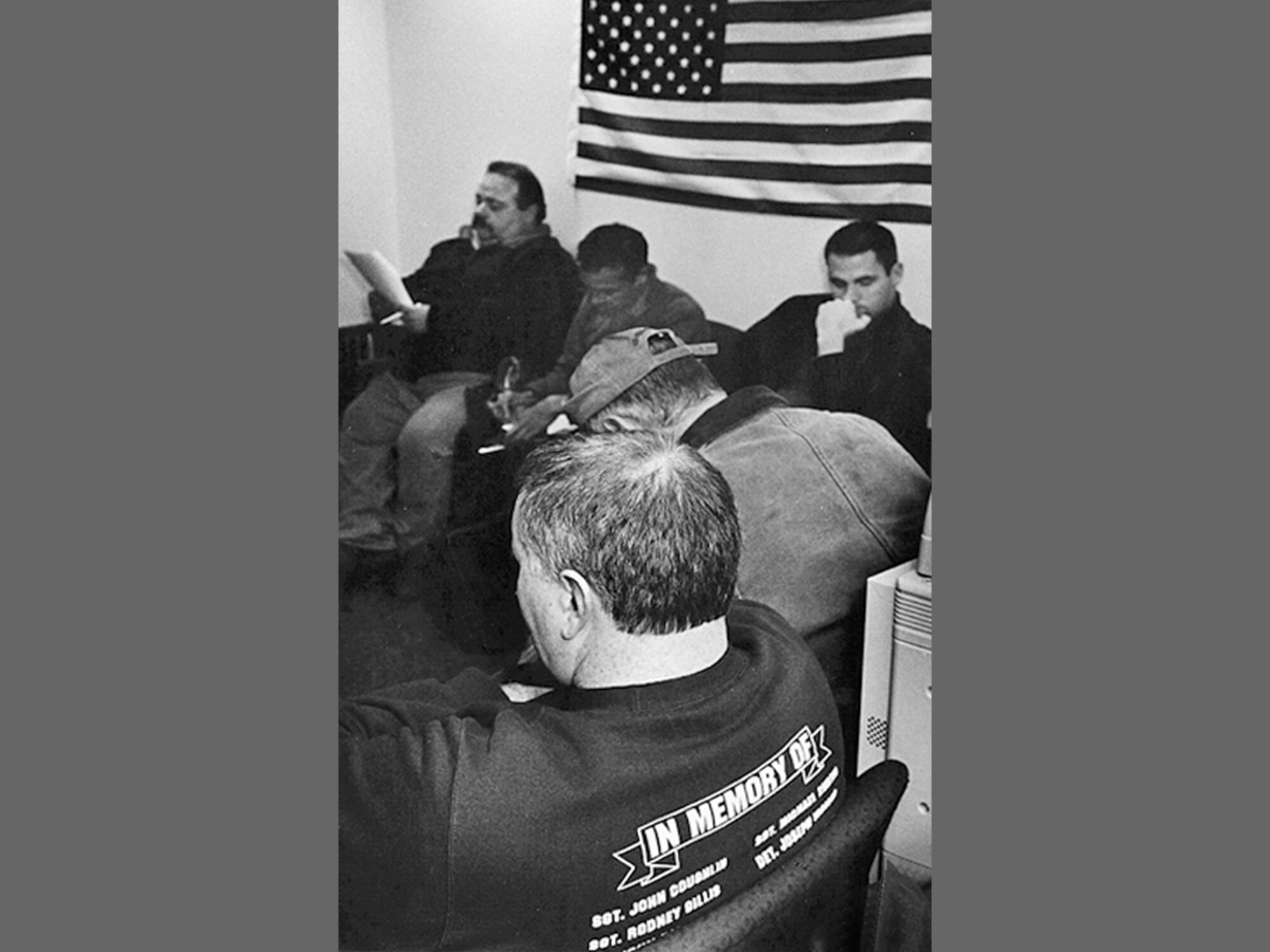
One year after the attack on the Twin Towers, I was invited by Phil Landrigan, M.D. and Steven M. Levin, M.D. to photograph the new Mount Sinai 9/11 Emergency Responder Medical Monitoring Program. By 2002, the Program had begun evaluating the health of the Responders. They included construction workers who had been lifted by baskets into the still smoking pile and rebuilt the damaged infrastructure there, truck drivers who hauled away the mountain of debris, city employees who had cleared the dust laden wreckage from streets, and police officers who secured the site.
Photograph courtesy of Earl Dotter.
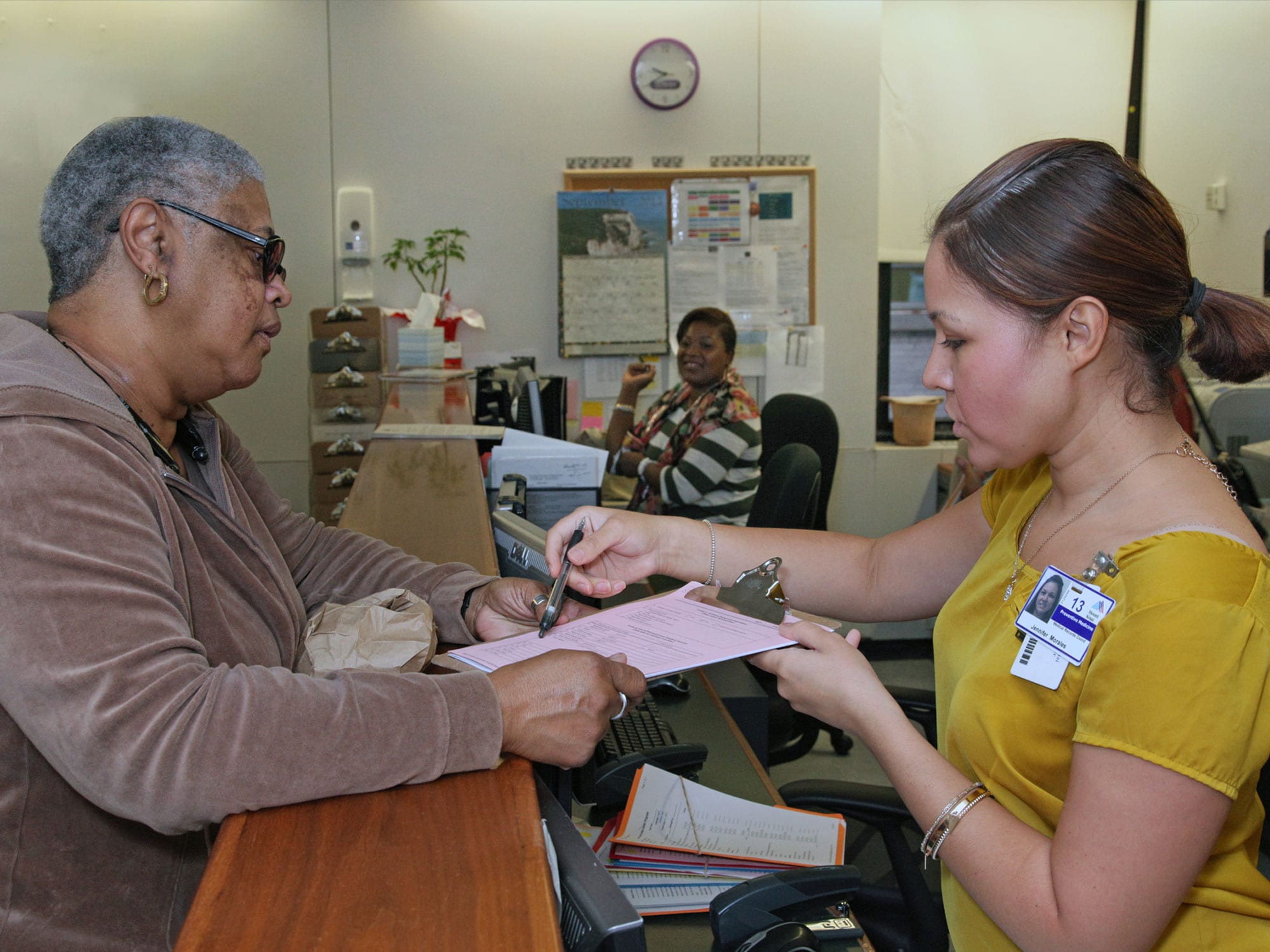
The pictured responder, on the left, checks in at the Mount Sinai World Trade Center Health Program. This 9/11 emergency responder is now assured of continued 9/11 related health care benefits throughout her lifetime.
Photograph courtesy of Earl Dotter.
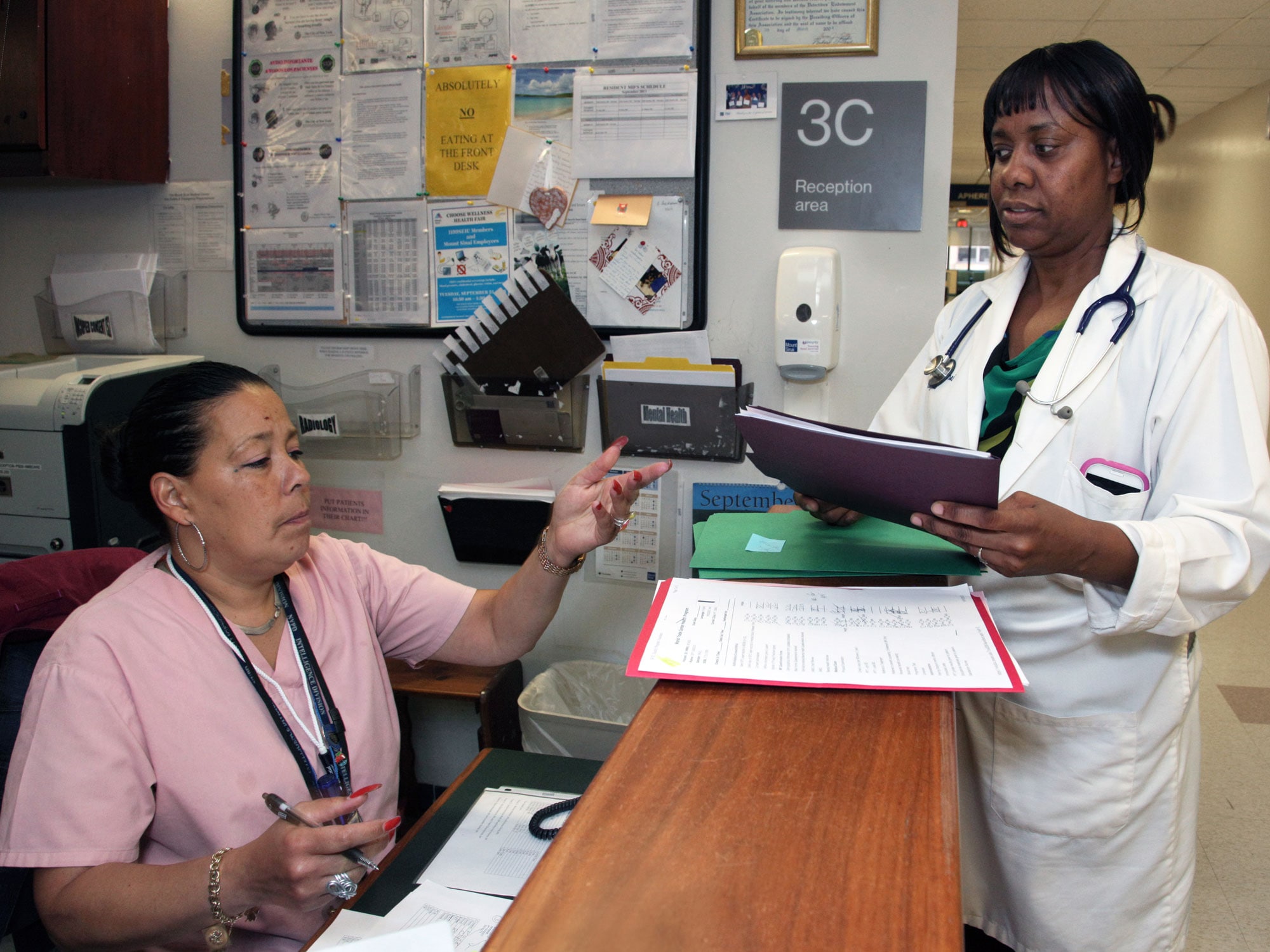
In 2013 I returned to the Mount Sinai Medical Center to what had become the federal World Trade Center Health Program, which provided for emergency responder health care benefits until 2015. We see Mount Sinai Staff conferring at the program’s reception desk.
Photograph courtesy of Earl Dotter.
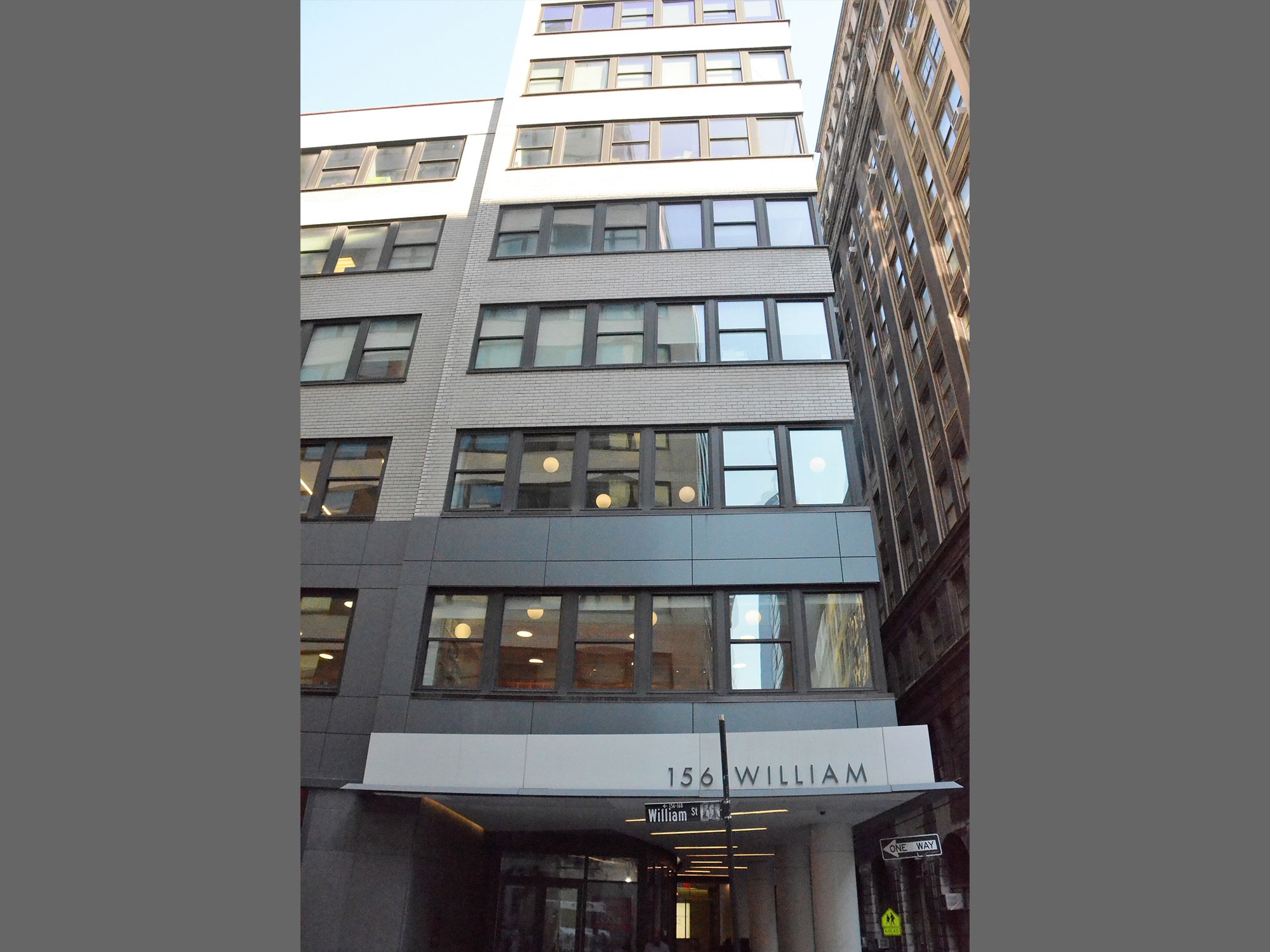
The William Street Clinic in Manhattan serves WTC Health Program members in the Survivor population as of 2018.
Photograph courtesy of Andrew Weathers.
Other Resources
Page Last Reviewed: October 23, 2023 | Page Last Updated: September 1, 2022
